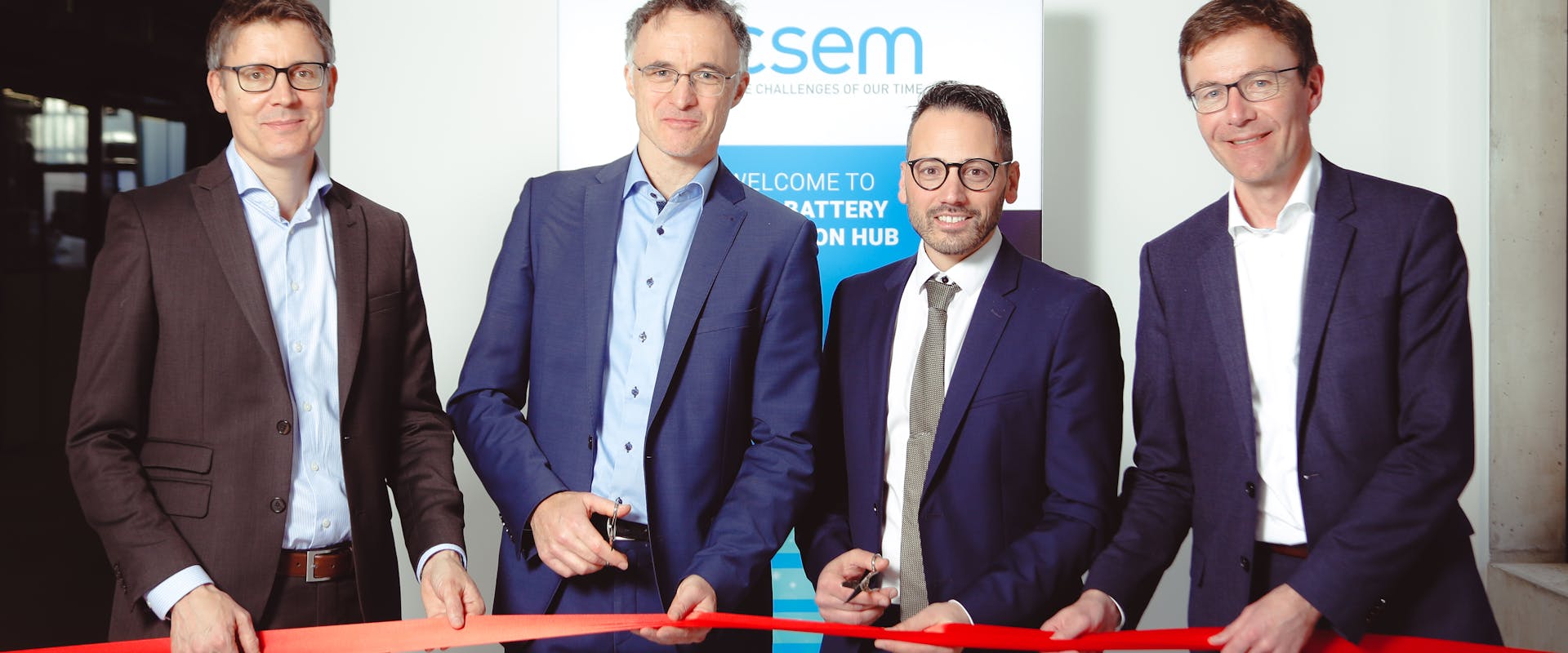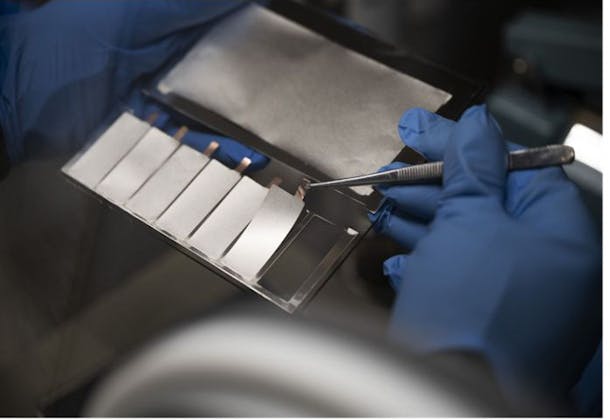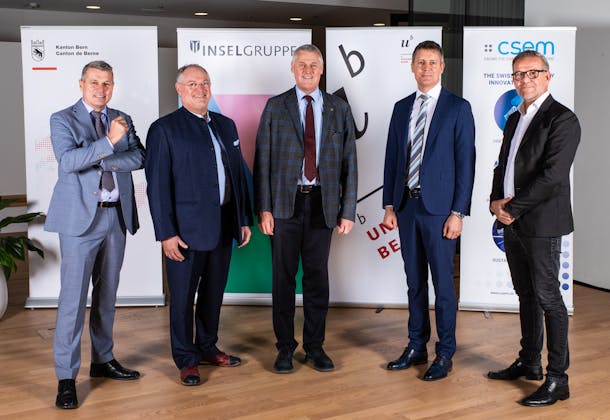February 16, 2023
The race to develop the battery of the future: Switzerland is developing its strong potential for innovation
Yesterday, 80 handpicked guests inaugurated CSEM's new Battery Innovation Hub (BIH) in Neuchâtel. At the site, interdisciplinary teams will work on the "battery of tomorrow" in close partnership with local companies. This facility is the only one of its kind in the country – and is therefore an important guarantee for Switzerland's competitiveness.

© CSEM - Battery Innovation Hub inauguration : (from left to right) Alexandre Pauchard (CSEM, CEO), Andreas Hutter (CSEM, Group Leader Energy Systems), Andrea Ingenito (CSEM, Group Leader Sustainable Energy) and Pierre-Alain Leuenberger (Neuchâtel Cantonal Bank, General Director).


